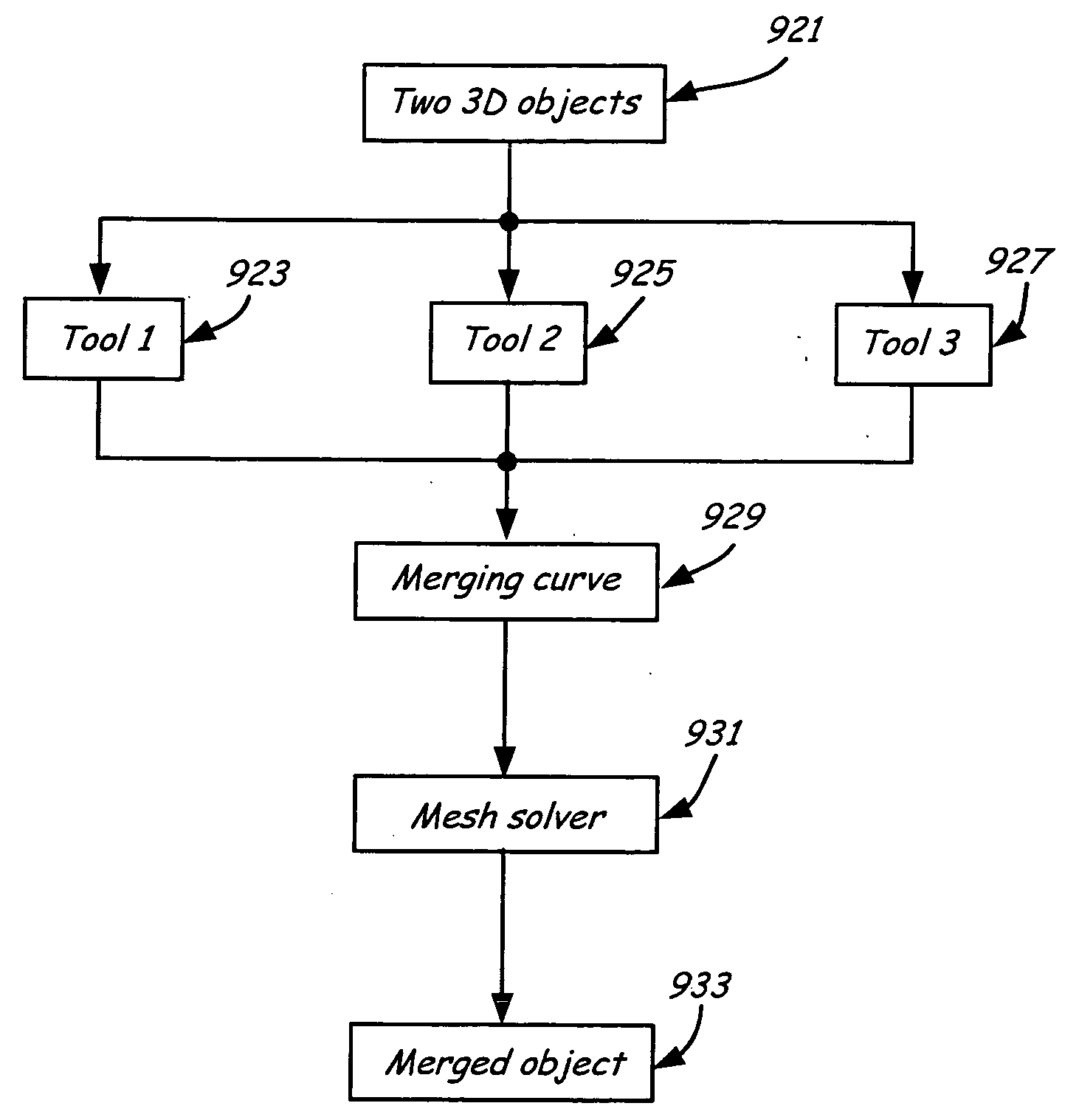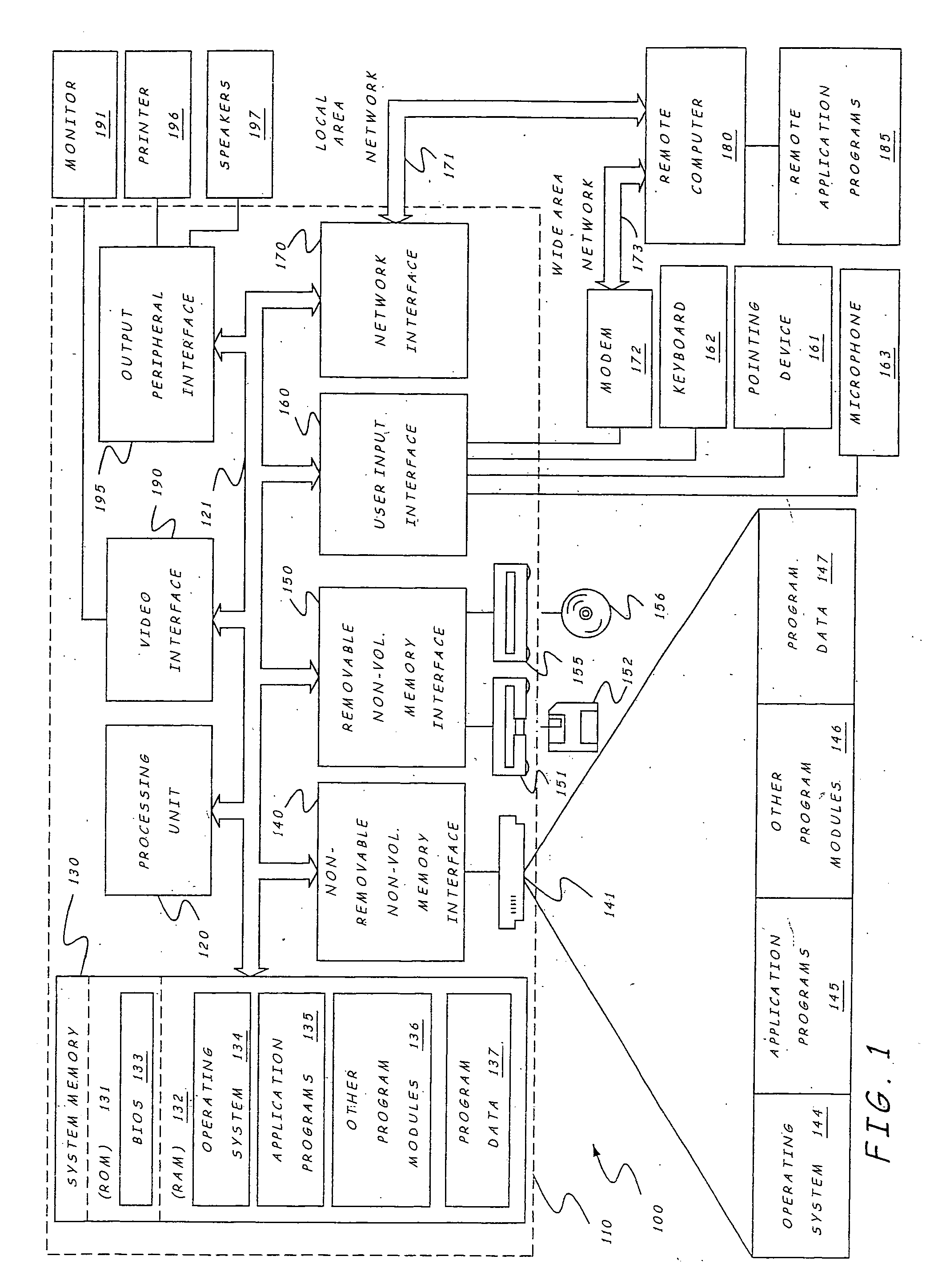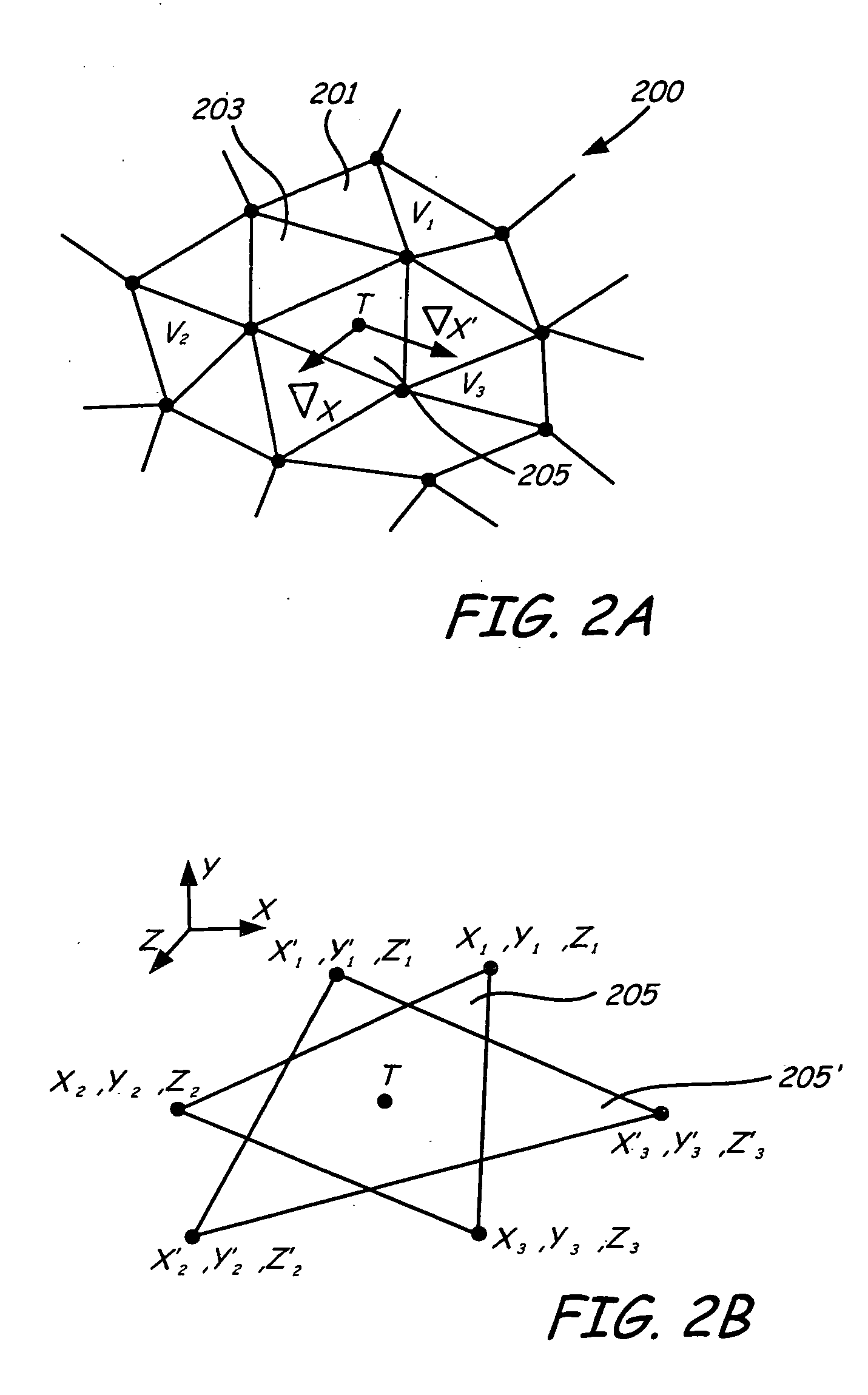Mesh editing with gradient field manipulation and user interactive tools for object merging
a gradient field and object merging technology, applied in the field of computer generated graphical images, can solve the problems of difficult to determine the merging curve, difficult to perform the merging operation of objects with dissimilar shapes and sizes,
- Summary
- Abstract
- Description
- Claims
- Application Information
AI Technical Summary
Benefits of technology
Problems solved by technology
Method used
Image
Examples
Embodiment Construction
[0031] The present invention relates to a mesh and shape editing system that may or may not use the Poisson equation as its theoretical foundation. In one aspect, methods / modules of merging two object meshes are presented that use various steps or means for determining a boundary or merging curve. Another aspect includes a mesh editing system that uses at least one of these method / modules of determining a boundary curve. However, prior to discussing the present invention in greater detail, an illustrative environment in which the present invention can be used will be discussed first.
[0032]FIG. 1 illustrates an example of a suitable computing system environment 100 on which the invention may be implemented. The computing system environment 100 is only one example of a suitable computing environment and is not intended to suggest any limitation as to the scope of use or functionality of the invention. Neither should the computing environment 100 be interpreted as having any dependenc...
PUM
 Login to View More
Login to View More Abstract
Description
Claims
Application Information
 Login to View More
Login to View More - R&D
- Intellectual Property
- Life Sciences
- Materials
- Tech Scout
- Unparalleled Data Quality
- Higher Quality Content
- 60% Fewer Hallucinations
Browse by: Latest US Patents, China's latest patents, Technical Efficacy Thesaurus, Application Domain, Technology Topic, Popular Technical Reports.
© 2025 PatSnap. All rights reserved.Legal|Privacy policy|Modern Slavery Act Transparency Statement|Sitemap|About US| Contact US: help@patsnap.com



